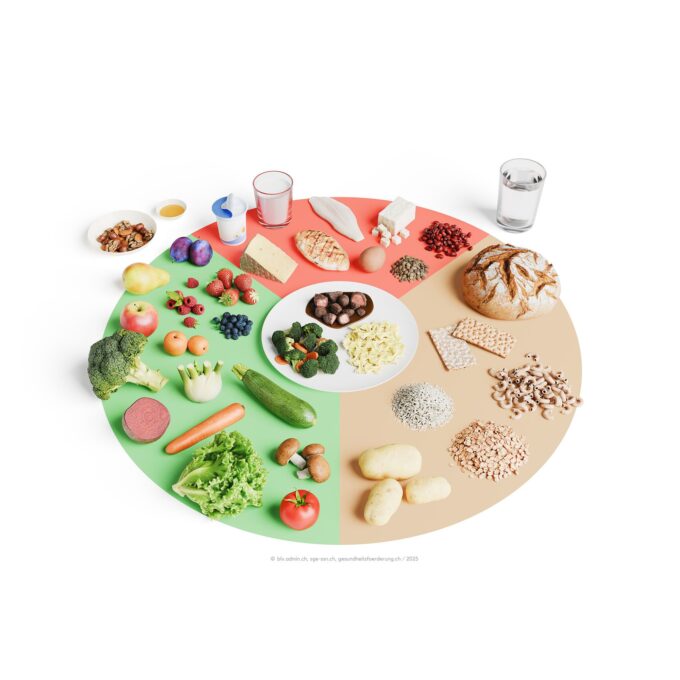Health survey 2018
In 2017, 85% of the Swiss population aged 15 and older felt healthy. 27% are smokers. This is less than in 1992, but the same as in 2007. Four out of five people drink alcohol, one in ten daily. The numbers of overweight and obese people have stabilized at 42%. These are the most important findings of the sixth "Swiss Health Survey" of the Federal Statistical Office (FSO) from 2017, which shows how the health behavior and health status of the population have changed over the past 25 years.

According to their own assessment, the Swiss population is predominantly in good health. 85% described their state of health as very good or good in 2017. There is a clear age trend here: over 93% of younger people aged 15 to 44 feel healthy, while the figure for people aged 75 and over is still 67%. One in four was slightly or severely limited in their everyday activities by a health problem for at least six months. In the older population aged 65 and over, high blood pressure (47%), elevated cholesterol (32%) and diabetes (11%) are common health complaints.
Smoker share remains the same
After declining from 1997 to 2007, the proportion of smokers has remained around 27% over the past decade. The proportion of Smoking is highest among 15- to 44-year-old males at 35%. However, there has been a sharp reduction in the amount of tobacco consumed. For example, from 1992 to 2017, the proportion of smokers who smoke 20 or more cigarettes per day has halved (1992: 41%; 2017: 21%).
Less daily alcohol consumption...
In 2017, 82% of the population drank alcohol. The proportion of abstainers has remained about the same as in 1992, while that of daily consumers has halved over the past 25 years from 20% to 11%. However, this is not the case in all age groups. The proportion of daily users is highest among people aged 65 and older and has remained at this level since 1992 (1992: 29%; 2017: 26%).
... but more alcohol on individual occasions
Alcohol consumption patterns have changed over time: The population tends to drink less frequently Alcoholbut more on the whole when the opportunity arises. Particularly among young people and adults up to 34 years of age, occasional high-risk consumption, so-called binge drinking, is widespread: The proportion of people who drink 5 (men) or 4 (women) glasses of alcoholic beverages within a few hours at least once a month increased from 19% in 2007 to 24% in 2017, and among young women aged 15 to 24 in particular, the rate doubled over this period (from 12% in 2007 to 24% in 2017).
Lifestyle Health: Physical Activities
Healthy behavior as a lifestyle is in vogue. Among men, the proportion of people who have never smoked in their lives increased from 38% to 45% between 1997 and 2017. Similarly, since 2002, the proportion of people who are physically active has been increasing (from 62% to 76%), and the proportion who are inactive has been decreasing (from 18% to 8%). Women, in particular, are more physically active, so gender differences in terms of physical activity are increasingly disappearing. However, social differences are also manifesting themselves: people with tertiary education are more likely to exhibit healthy behaviors than those without post-compulsory education.
Balanced diet
Two thirds of the population pay attention to their diet and 21% meet the Dietary recommendations in the consumption of fruits and vegetables - women more than men (28% vs. 15%). Around two-thirds of the population consumes meat a maximum of four days a week. This proportion has increased by 8 percentage points compared with 1992. Especially among women aged 25-64, the frequency of meat consumption is decreasing. Over the past 25 years, among women in this age group, the proportion eating meat daily has halved from 20% to 10%. At the same time, the proportion of those who do not eat meat has tripled (from 2% to 6%).
Stabilization in case of overweight
Following periods of growth, in 2017 the proportion of people who were overweight (BMI 25 to <30) or Obesity (BMI 30 and above) at 42%, the same level as in 2012. The proportion of persons with obesity has doubled compared with 1992, from 5% to 11%. Men and women are almost equally likely to be obese (12% and 10%, respectively); however, men are more likely to be overweight than women (39% versus 23%). There are clear social differences in obesity: people who have only completed compulsory schooling are more likely to be obese than those with higher education (21% versus 8%).
Sixth implementation of the survey
In 2017, more than 22,000 people in Switzerland were surveyed about their health status and health behavior. The Swiss Health Survey has been conducted every five years since 1992. The continuous implementation allows behavioral patterns to be observed over 25 years. The health of the population is continuously changing in line with social change. Of particular interest are the population groups in which changes are observed and those in which they are not.
Text: FSO, Federal Office for Statistics









